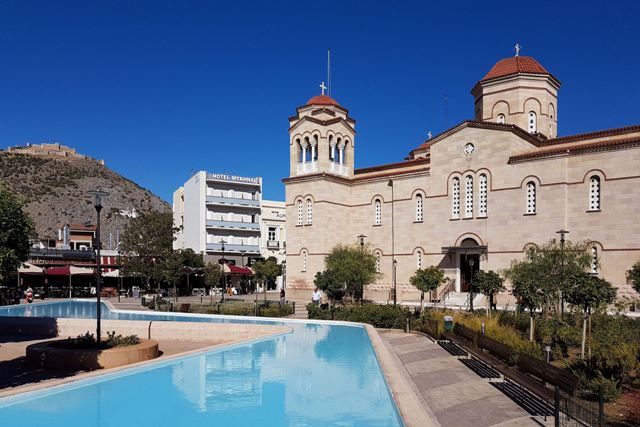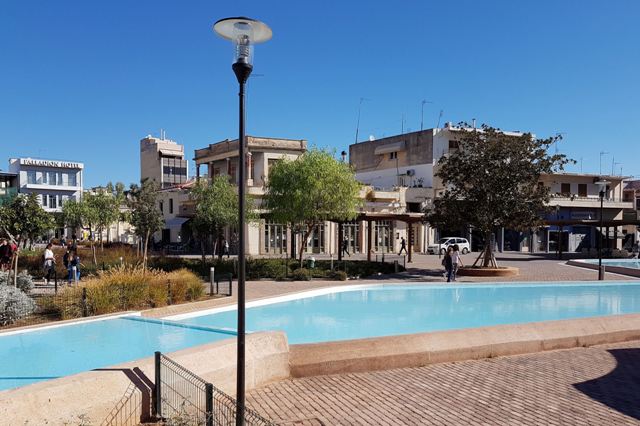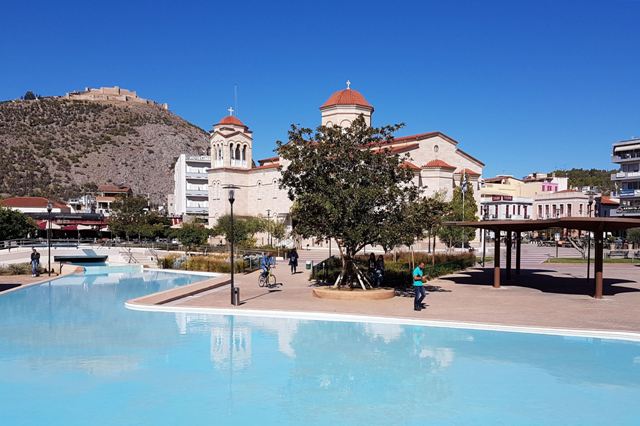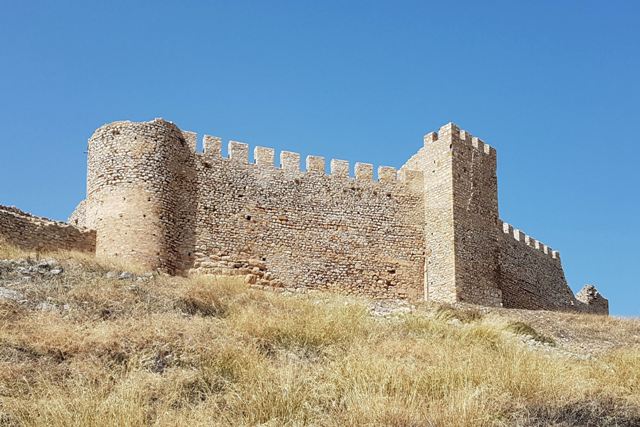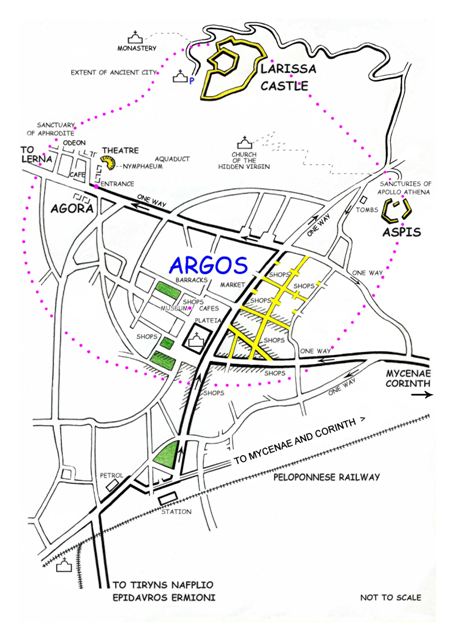Argos
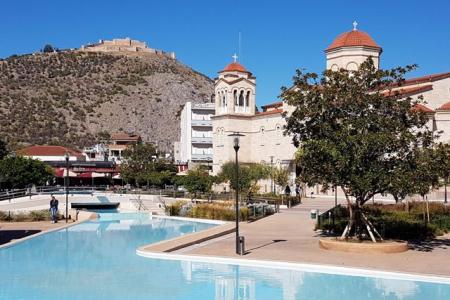 ARGOS - Distance from Ermioni: 89 kms/1.3 hours
ARGOS - Distance from Ermioni: 89 kms/1.3 hours
Argos gives its name to the whole Argolis region and is the most populated city of the Argolida. It is a characteristic big Greek city, located 11 kms North of Nafplio, on the main road that takes you past the Mycenaean citadel of Tiryns. As Argos is one of the oldest cities in Europe, there is a long historic background. The first findings of human inhabitation in the area are dated approximately by the end of the third millennium BC. Inachon, was the mythical hero and founder, and the first king of the city. A later king re-named the city after himself. The city of Argos is famous for its hilltop Castle of Larissa, Aspis, the ancient Roman Agora and large Hellenistic theatre. The theatre was constructed in the 3rd century BC with a capacity of 20,000 seats, it is one of the biggest theatres in Greece, far larger than Epidavros. Close by, one can also find the Roman baths and the Nymphaeum.
The Archaeological Museum of Argos is one place you should visit when exploring the city. In 1957 the doors were open to the public exhibiting various findings not only from the city of Argos, but from the surrounding areas as well. Certain findings are dated from the prehistoric years through to the late Roman period. Argos was excavated principally by the French School of Archaeology, with excavations still ongoing. The museum is situated in the house of General Kallergi, which was built in 1828-1830, located close to the Metropolis Cathedral of Saint Peter in the central city square. The museum closed in 2014 to modernise its antiquated building infrastructure. The Archaeological Museum was open daily 08:00 - 15:00. Closed on Mondays. Admission: 2 Euros. Museum presently closed for redevelopment. Expected to reopen by end of 2023.
The Castle of Larissa which towers over the city is a Medieval site that the visitor should explore. The hill over the city was first fortified during the 6th century BC, and was named after the daughter of the mythical hero Pelasgos. Some ancient Cyclopean wall sections of the fortifications are still visible, dating from the Mycenaean period, which were incorporated into the 10th century double-ring of stone walls. With each new conqueror, additional wall sections, towers and bastions were added to the castle defenses. These invaders included Romans, Frankish Crusaders, Venetians and Ottoman Turks. Today, you can drive up to the castle and enjoy spectacular panoramic views from the crest of Larissa Hill, the 5 km journey from the central square to the castle crest takes you on a road that 'snakes' right around the castle, giving you great views of the castle from all angles. The castle overlooks the church of Panaghia, the Hidden Virgin of the Rocks. This church was originally a monastery, built over an ancient cave sanctuary of the goddess Hera Akraia. During 2016/17 Larissa Castle underwent extensive renovation works, which restored exterior walls, battlements, towers and interior buildings. From the battlements of Larissa castle, there are wonderful panoramic views of the whole Argive plain towards Nafplio, Aspis Hill and the beautiful modern monastery of Aghia Marina. Admission: Free
Aspis (Aspida) and the ancient city of Deiras lies below the castle of Larissa, on a circular wooded hill. Archaeological ruins at the bottom of the hill have identified the sanctuary of Pythia Apollo and Athena the Sagacious, erected in the 5th century BC. During the excavations of the sanctuary area, tombs, temples and an ancient market with its stoa were found. At the summit of Aspis hill there are the pre-Mycenaean ruins of ancient Deiras from the middle bronze age 2000-1600 BC (pictured right), the small chapel of Aghios Elias and close by a small taverna where you can get food and refreshments during the high summer months. Driving from the city centre, the entrance to the Aspis is on the right of the junction that turns left up to the Medieval Castle of Larissa, a further 3.5kms away. Admission: Free
The Ancient Agora is located on the slopes of Mt. Larissa to the South-East of the castle. The archaeological site includes the large Hellenistic theatre, which originally included 20,000 seats due to the temporary relocation of the Nemean Games to Argos. The existing theatre seats are carved directly into the rock, but almost half the seats have now gone. Close by there is the smaller older 5th century BC Odeon theatre, so called as the Romans later covered this theatre with a roof, which could seat an audience of up to 1,800 people. It's quite possible that the ancient Greek writers like Aeschylus, Sophocles, Euripides and Aristophanes knew both these theatres. The Nymphaeum is close to the large theatre, once a monumental Roman drinking fountain and the Aqueduct, built during Hadrian's time, that brought fresh water to Argos from the nearby mountain. Water was required for the thirsty population, and also for the giant Roman baths that are the centrepiece of the archaeological site, constructed from Roman mud-bricks. At the far side of the Odeon there is the ancient Sanctuary of Aphrodite, and the ancient Agora (market place) is located across the modern road from the main archaeological site. Argos was initially destroyed by the Visigoths in 395-396 AD and twice again by the Ottoman Turks in 1397 and 1821. The Ancient Agora archaeological site is open daily 08:00 - 15:00. Admission: Free
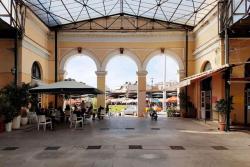 Argos of today has been built in a giant oval shape and has plenty of traditional and modern shops, from quaint haberdashery shops to the latest fashion boutiques. In the city's central plateia square, is the large Metropolis Cathedral of Saint Peter, surrounded by many cafes, kiosks, bistro's and bars. Close by is the recently renovated Archaeological Museum of Argos and the Barracks of Kapodistrias, originally built in the 1690's. Opposite the barracks there is a very large market place, with a colourful outdoor market held every week on Wednesdays and Saturdays only. The original 19th century Meat and Fish Market building (pictured right) was constructed in 1889, is located at the opposite end of the market place. The whole market place area was redeveloped in 2017 and is now mostly pedestrianised.
Argos of today has been built in a giant oval shape and has plenty of traditional and modern shops, from quaint haberdashery shops to the latest fashion boutiques. In the city's central plateia square, is the large Metropolis Cathedral of Saint Peter, surrounded by many cafes, kiosks, bistro's and bars. Close by is the recently renovated Archaeological Museum of Argos and the Barracks of Kapodistrias, originally built in the 1690's. Opposite the barracks there is a very large market place, with a colourful outdoor market held every week on Wednesdays and Saturdays only. The original 19th century Meat and Fish Market building (pictured right) was constructed in 1889, is located at the opposite end of the market place. The whole market place area was redeveloped in 2017 and is now mostly pedestrianised.
Epigraphic Museum has been created in the eastern wing of the 17th century Kapodistrias Barracks. These barracks had various uses, originally as army barracks, then hospital, market and post office. It will house the 136 unique bronze inscribed panels, part of the archive of the treasury Pallas, where the sacred treasure of Hera was kept. The museum is planned to open at end of 2023.
Around the area of Saint Peter's cathedral, there are many streets and pedestrian avenues where you can shop to your hearts content, then later relax in the numerous cafes located around the main square, along the avenues and most street corners. If you wanted to extend your stay in Argos, there are many hotels that surround Saint Peter's square, which is set in the heart of the city. Saint Peter's square has been redeveloped recently, together with the main open-market square, with most public areas within the centre now being pedestrianised. All motorised transport is now re-routed on a one-way system on the perimiter of the city centre.
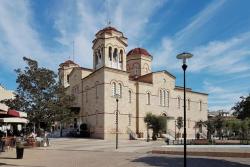 Approaching Argos from Nafplio and Tiryns, you arrive and cross the Peloponnese Railway track, and turn right at the T-junction towards Argos. Immediately after this junction, you can turn left and head directly towards the Ancient Agora archaeological site, however, if you want to get to the city centre, then continue straight and follow the one-way system. After passing the Argos railway station on your right, turn left at the 'City Centre' signpost and continue straight on until you reach Saint Peter's main square. If you wish to visit the Castle of Larissa or the Aspis, then continue straight on and pass the main square and market place until you reach a 3-way junction. At this junction, on the left there is a small road leading to the Panaghia church, turn right for the Aspis archaeological site. Continue straight on and then turn left onto a small winding road leading up to the Castle of Larissa.
Approaching Argos from Nafplio and Tiryns, you arrive and cross the Peloponnese Railway track, and turn right at the T-junction towards Argos. Immediately after this junction, you can turn left and head directly towards the Ancient Agora archaeological site, however, if you want to get to the city centre, then continue straight and follow the one-way system. After passing the Argos railway station on your right, turn left at the 'City Centre' signpost and continue straight on until you reach Saint Peter's main square. If you wish to visit the Castle of Larissa or the Aspis, then continue straight on and pass the main square and market place until you reach a 3-way junction. At this junction, on the left there is a small road leading to the Panaghia church, turn right for the Aspis archaeological site. Continue straight on and then turn left onto a small winding road leading up to the Castle of Larissa.
Parking in the centre of Argos can be a little difficult, as most of the original streets are narrow, with parking allowed on one side of the street only. However, there are a number of paying car-parks within the centre, and free street parking if you are prepared to park your vehicle just outside the city centre and walk a few minutes. Whatever you choose, you'll have plenty to see and explore.
The Argos Archaeological Museum is presently closed, undergoing internal redevelopment. Tel: +30 27510 68819 The project has taken over nine years to complete. Announcement made at end of May 2023 saying redevelopment almost complete and museum would reopen before the end of the year.
